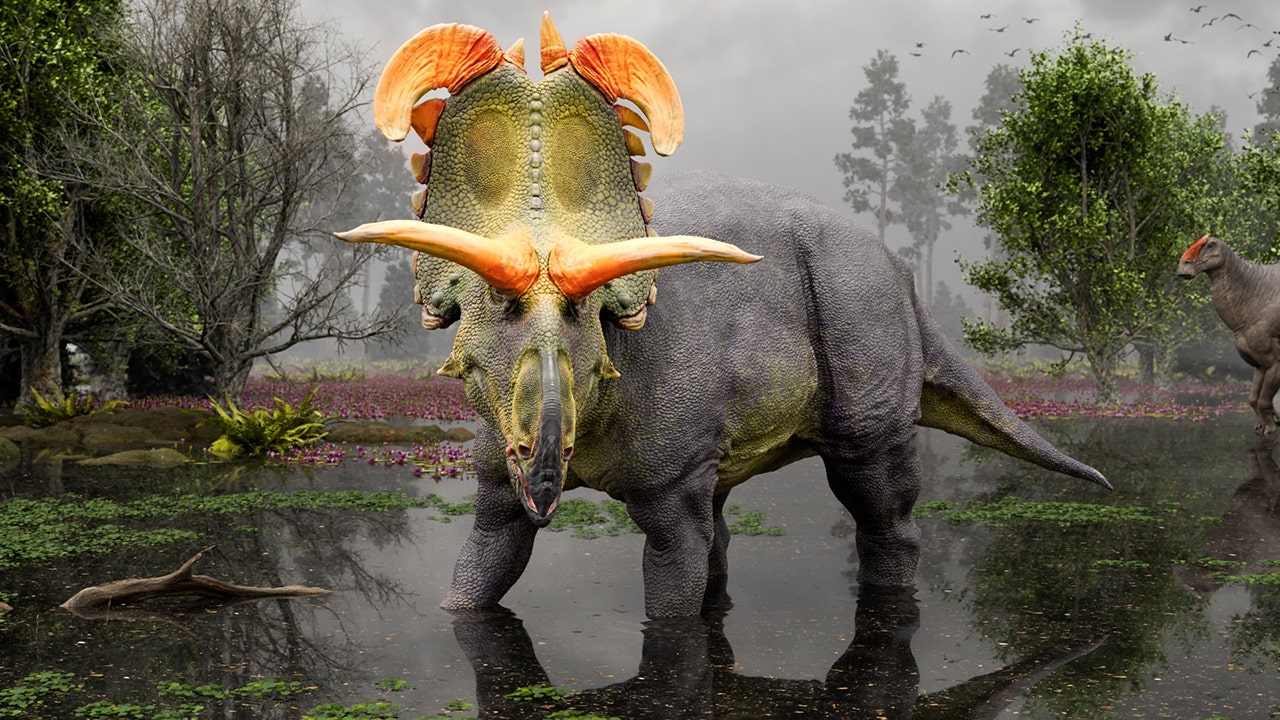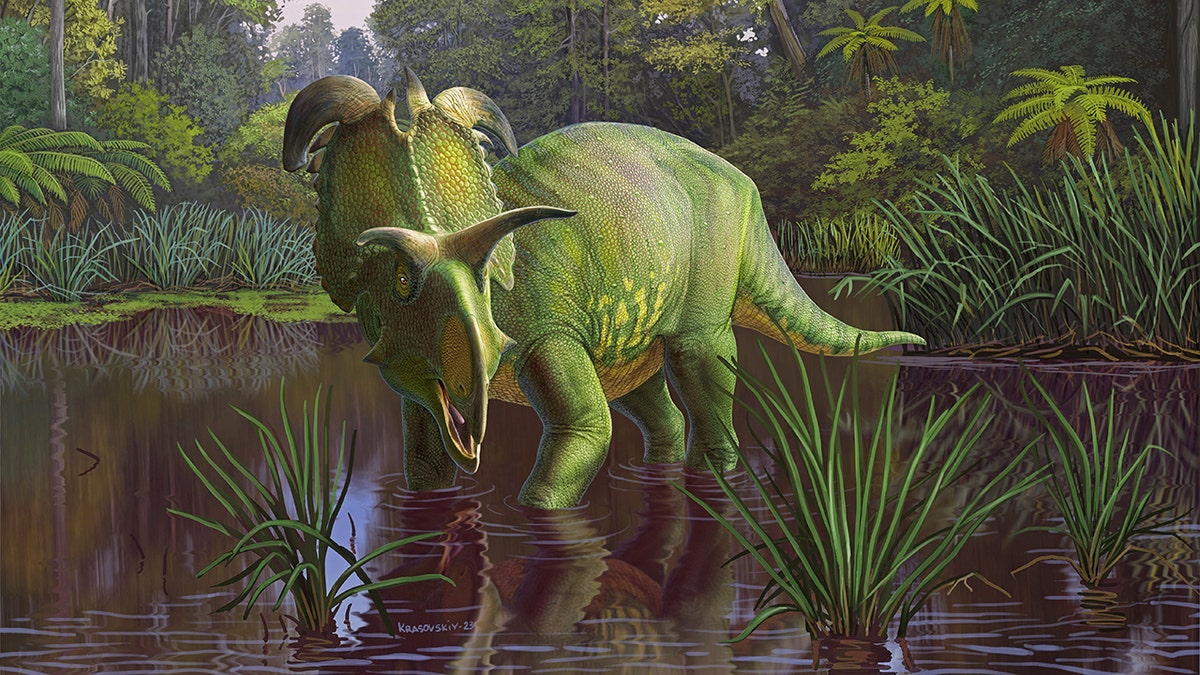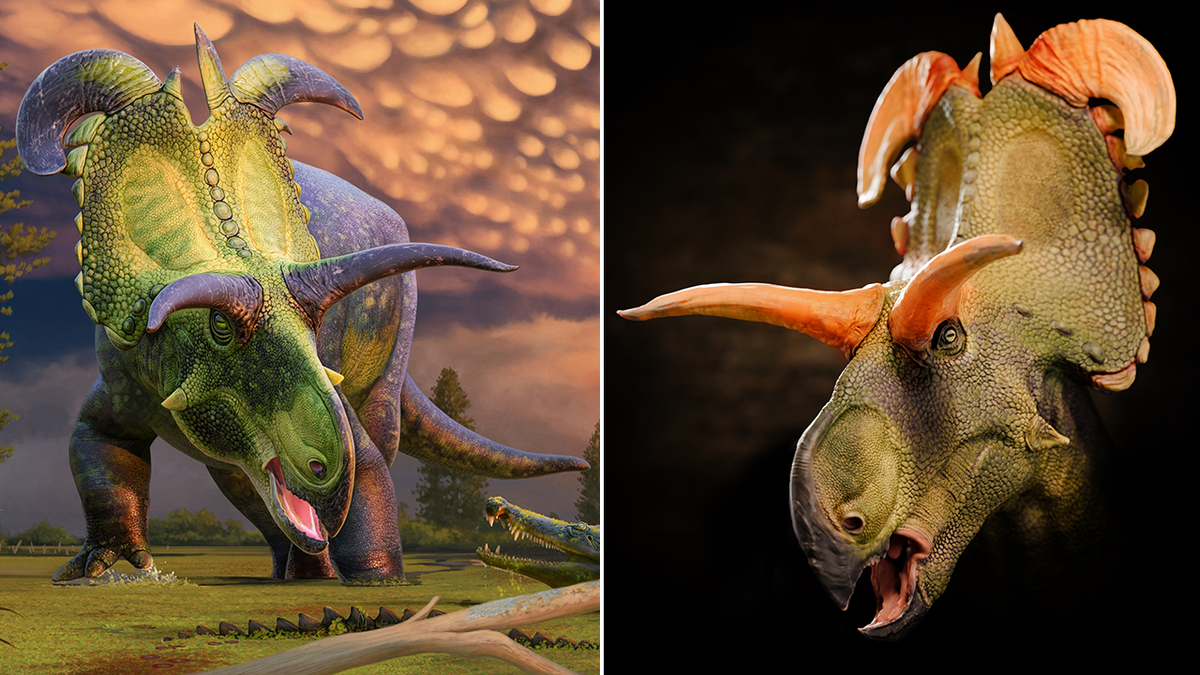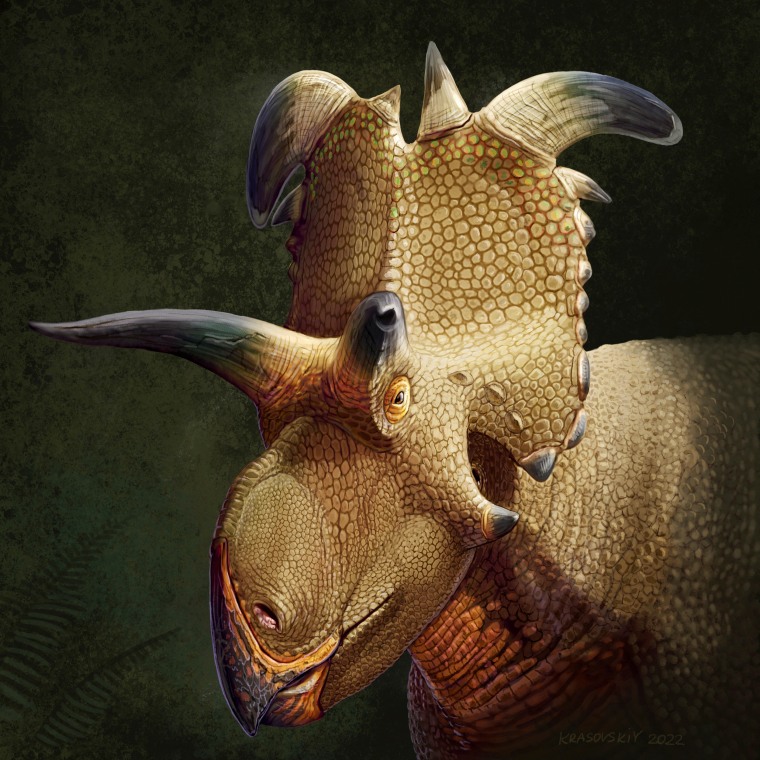
A new dinosaur species, Lokiceratops rangiformis, was discovered in Montana and is now considered the largest and most ornate horned dinosaur ever found. The fossils were unearthed in 2019 on private land near the US-Canada border. Lokiceratops inhabited swamps and floodplains along the eastern shore of Laramidia around 78 million years ago. This dinosaur had several unique features, including the absence of a nose horn, huge blade-like horns on the back of its frill, and an asymmetric spike in the middle of its frill. The name Lokiceratops translates to 'Loki's horned face,' honoring Norse god Loki. Researchers from Colorado State University and the Natural History Museum of Utah have studied this dinosaur, which was first reported in the scientific journal PeerJ on June 21, 2024. The fossil remains will be displayed at the Natural History Museum of Utah for six months.








